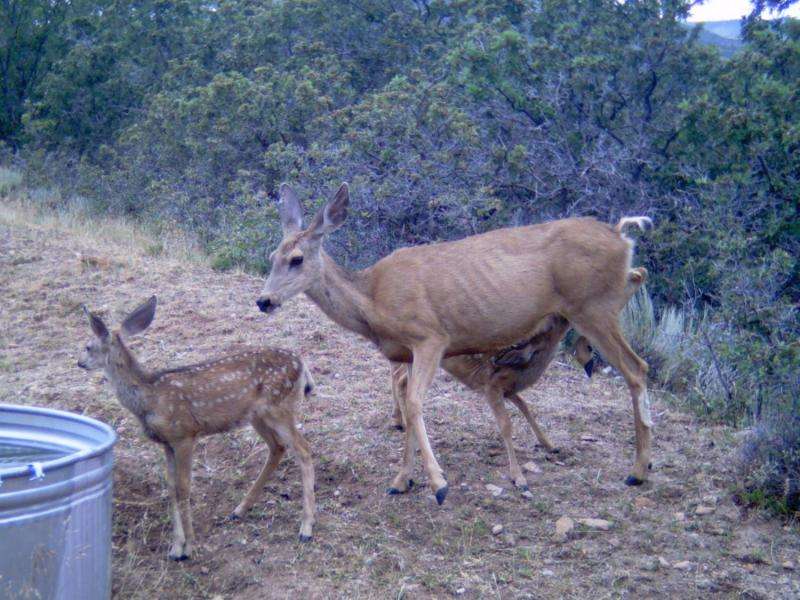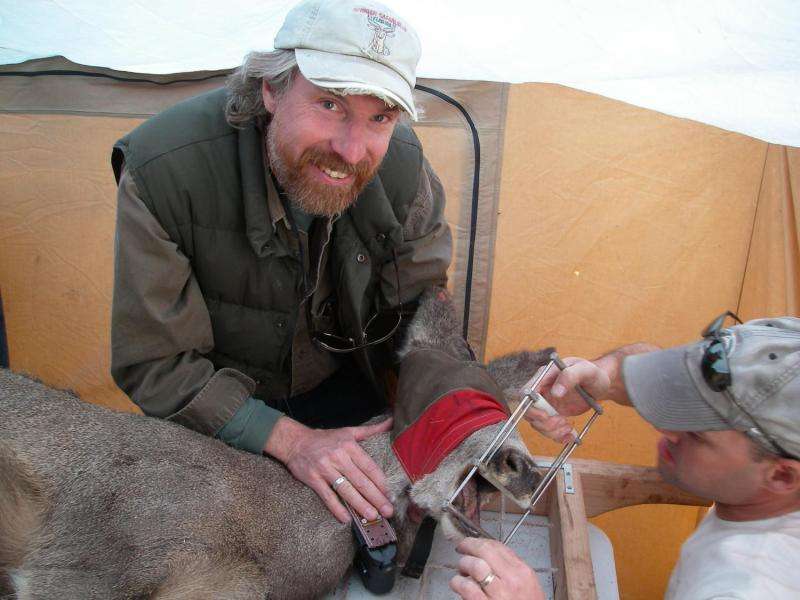NASA satellites aid ecologists in mapping seasons, deer reproduction

If you want to track the reproductive success of a plant-eater, monitor its food supply: plants. And, if you want to track vegetation, monitor precipitation.
"In the American West, it's all about water," says Utah State University ecologist David Stoner.
Stoner, with USU colleague Tom Edwards of the U.S. Geological Survey's Utah Fish and Wildlife Research Unit, Joseph Sexton and Jyoteshwar Nagol of the University of Maryland and Heather Bernales of the Utah Division of Wildlife Resources, published findings from a NASA-funded study using satellite imagery to explain mule deer demography from the White Mountains of central Arizona to the Wasatch Range of northern Utah in the Feb. 5, 2016, issue of 'PLOS ONE.'
"Female Mule deer face their greatest energetic demands from the latter stages of pregnancy through weaning, so we predict peaks in fawn births should match periods of high vegetation productivity," says Stoner, postdoctoral researcher in USU's Department of Wildland Resources and the USU Ecology Center and lead author on the paper. "The effect of climatically driven plant phenology on ungulate reproduction is one key to predicting species-specific demographic responses to climate change."
Stoner and colleagues compared satellite-derived data on primary productivity – that is, the rate of vegetation growth – with mule deer counts collected by state fish and wildlife personnel over a 500-mile stretch spanning distinct ecoregions of the Great Basin, Colorado Plateau and Chihuahuan Desert.
"Among the questions we're asking is why do fawn counts vary so much across space and from year to year?" Stoner says.

NASA's eyes in the sky provided clues, along with some surprises.
"We expected peak plant productivity and, therefore, fawn births to occur earlier in the southern-most parts of our study area, but that wasn't the case," Stoner says. "We thought the milder winters and greater amount of monsoonal moisture during summer would give expectant mothers an advantage."
Instead, increased climatic variability in lower latitudes meant unpredictable supplies of forage. While a sudden summer rainstorm might bring a surge of greenery, the ensuring high temperatures may rapidly deplete the banquet.
"If deer miss the optimal window for nutrition and vegetation is sparse or dries quickly, nutritional stress rises and juvenile survival plummets," Stoner says.
In contrast, deer at higher latitudes may experience harsher winters, but have longer access to emergent vegetation, giving them a more sustained and consistent food supply during the sensitive birth-to-weaning period.
"Our findings provide a new approach to monitoring and managing ungulate populations," Stoner says. "Climate projections for the American Southwest suggest longer droughts and northward expansion of the monsoon."
The link between plant phenology and ungulate populations is critical, he says, as state wildlife managers weigh the impacts of deer and make decisions involving recreational hunting and prevention of agricultural and urban conflicts and vehicle collisions.
More information: In PLOS ONE: journals.plos.org/plosone/arti … journal.pone.0148780
Journal information: PLoS ONE
Provided by Utah State University



















